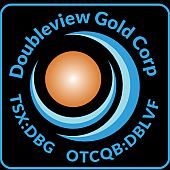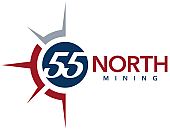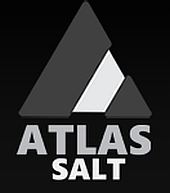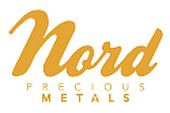 Viva Gold Announces Results from Core Drilling Program at the Tonopah Gold Project, Nevada
Viva Gold Announces Results from Core Drilling Program at the Tonopah Gold Project, Nevada
|
Vancouver, BC – August 22, 2022 – Viva Gold Corp. (TSX-Venture: “VAU”; OTCQB: VAUCF (the “Company” or “Viva”) is pleased to provide an update on its recently completed 6-hole 1,307 meter-oriented core drilling program at the Tonopah gold project (“Tonopah”), located on the prolific Walker Lane gold trend near Tonopah, Nevada.
“This drilling program, designed to capture geotechnical information, was very successful in significantly expanding the width of the mineralized zone in the center of the western lobe of the resource pit. Additionally, the results demonstrate the potential to convert waste to gold mineralization in poorly drilled areas of the resource pit. A significant amount of structural and geotechnical data was captured that will be utilized in mine design and in locating drillholes for a 3,000-meter reverse circulation drilling program that is slated to commence next month. Tonopah is a covered gold deposit, laying under valley floor gravels with no outcrop exposure, meaning that all geologic and structural information must be captured from either drill holes or by geophysical methods. The data captured in this program provides the information required to complete the geotechnical study needed to initiate pre-feasibility study/feasibility study on the project. It also provides critical insight into the structural controls to mineralization necessary to facilitate future discovery at both the eastern and western extents of the project,” states James Hesketh, President & CEO.
Drill holes TG2204 and TG2201 were drilled to test the north and south extents of mineralization in the center of the western lobe of the resource pit. TG2204 intercepted a total of 17 meters of gold mineralization averaging 0.8 grams/tonne (“g/t”) gold (“Au”) in the north side of the pit wall, while TG2201 intercepted over 15 meters averaging 0.55 g/t Au mineralization inside the south wall of the pit. These combined results expanded the width of the gold zone to over 200 meters through the center of the west pit, a result that strongly demonstrates the potential to infill poorly drilled portions of the pit that are currently carried as waste in the model.
TG2202 and TG2203, drilled at the west end of the resource pit, intercepted possible north-south trending fault structures, which may have resulted in a potential structural offset of the main mineral trend to the north in this area. TG2203 intercepted 1.5 meters at 19.9 g/t Au and 19.2 g/t silver (“Ag”) in a vein structure in the center of the main trend inside the west end of the resource pit.
Holes TG2205 and TG2206 were drilled to penetrate the mineralized horizons to the north and south of hole TG2101 (22.9 meters at 1.5 g/t Au) at the east end of the resource pit. The results potentially describe the north-south limits of a trough of easterly trending gold mineralization. |
|
|
The oriented core holes in this program were designed to penetrate potential future open pit highwalls to capture data for mine design efforts and to determine structural controls to gold mineralization in those areas. The pit slope locations were defined by the $1,650 resource pit shell used for resource estimation in the NI43-101 Technical Report, Preliminary Economic Assessment of the Tonopah Project (amended April 12, 2022, click here to view) authored by Gustavson Associates including Donald E. Hulse, P.E., SME-RM; Christopher Emanuel, SME-RM; Deepak Malhotra, Ph.D., SME-RM; and Edward Bryant, AIPG, CPG. Four holes were drilled on the western end of the principal resource pit and two on the eastern end. Each hole was oriented using teleview techniques and geotechnically logged and assessed for rock quality data. Core samples were taken to perform a total of 67 rock mass and strength tests on the various rock types intercepted in the program. Half core was utilized for assay, while the remaining half core will be utilized for metallurgical testwork. |
|
|
|
About Viva Gold Corp:
Viva Gold Corp’s (TSX-V: VAU; OTCQB: VAUCF; Frankfurt :7PB) principal asset is its 100% ownership in the Tonopah Gold Project (Tonopah), a large land position on the world class Walker Lane Mineral Trend in western Nevada, located about 30 minutes’ drive south-east of the Kinross Round Mountain gold mine. The project is well advanced with a positive Preliminary Economic Assessment (PEA) describing a potential open pit, heap leach gold recovery operation and a pit confined measured and indicated gold mineral resources containing 394,000 ounces at 0.78 grams/tonne and 206,000 ounces of Inferred resource at 0.87 grams/tonne. The principal mineral trends on the property remain open for extension and the company has a track record of steadily increasing gold resource over the last four years. Viva is building market awareness as it advances Tonopah towards feasibility study and permitting and has made a significant commitment to ESG and de-risking the project through open community disclosure and near completion of a number of baseline environmental and technical studies.
Viva has a strong capital structure with 91.6 million shares outstanding and a strong management team and board who can claim both gold exploration and production experience. For additional information on Viva Gold and the Tonopah Gold Project, please visit our website: www.vivagoldcorp.com. For further information please contact: Anne Hite, Director Investor Relations Forward-Looking Information: Cautionary Note to Investors — Investors are cautioned not to assume that any “measured mineral resources”, “indicated mineral resources”, or “inferred mineral resources” that the Company reports in this news release are or will be economically or legally mineable. United States investors are cautioned that while the SEC now recognizes “measured mineral resources”, “indicated mineral resources” and “inferred mineral resources”, investors should not assume that any part or all of the mineral deposits in these categories will ever be converted into a higher category of mineral resources or into mineral reserves. These terms have a great amount of uncertainty as to their economic and legal feasibility. Under Canadian regulations, estimates of inferred mineral resources may not form the basis of feasibility or pre-feasibility studies, except in limited circumstances. Further, “inferred mineral resources” have a great amount of uncertainty as to their existence and as to their economic and legal feasibility. It cannot be assumed that any part or all of an inferred mineral resource will ever be upgraded to a higher category. The mineral reserve and mineral resource data set out in this news release are estimates, and no assurance can be given that the anticipated tonnages and grades will be achieved or that the indicated level of recovery will be realized. Neither TSX Venture Exchange nor its Regulation Services Provider (as that term is defined in the policies of the TSX Venture Exchange) accepts responsibility for the adequacy or accuracy of this release. |


































